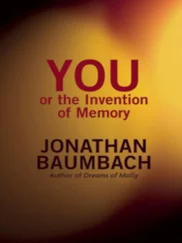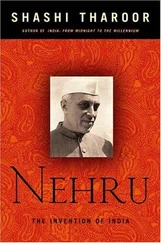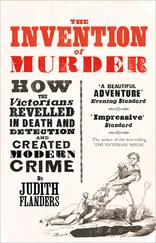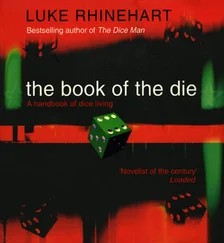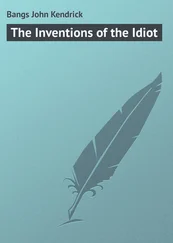1 ...6 7 8 10 11 12 ...17
The “spiral to urban apartheid”
“If the Negro population as a whole developed an even stronger feeling of being ‘penned in’ and discriminated against, many of its members might come to support not only riots, but the rebellion now being preached by only a handful. If large-scale violence resulted, white retaliation could follow. This spiral could quite conceivably lead to a kind of urban apartheid , with semi-martial law in many major cities, enforced residence of Negroes in segregated areas, and a drastic reduction of personal freedoms for all Americans, particularly Negroes.”
The Kerner Report: The 1968 Report of the National Advisory Commission on Civil Disorders , 1989 [1968].
Paradoxically, America’s obsession with urban pathology became fixated onto the black “ghetto” just as the latter was imploding under the press of deindustrialization, demographic transformation, and black protest – so that the term itself turned into the pejorative designation of an urban area of social disintegration, contrary to its dual historical reality as instrument of ethnoracial closure by whites and vector of African-American social cohesion and advancement for a half-century. 48As they spread, the riots came to frighten, not just whites in and out of the city, but also the African-American bourgeoisie committed to pressing for peaceful and gradual change through institutional means, and so they opened a social fissure between the black middle and working classes that would widen in subsequent decades. 49With buildings ablaze, rampant looting, reported sniper fire, rolling street clashes, and tanks patrolling its thoroughfares, it is no wonder the metropolis was diagnosed as acutely “sick,” downright “unheavenly,” and, to sum it all up, yet again “in crisis.” 50Foreboding invocations of “jungle,” “wilderness,” “lawlessness,” “psychological enfeeblement,” and “depravity” returned with a vengeance and crowded public discussion of the city’s fate while the country shuddered at the prospect of an all-out “race war” fought in the streets of its major urban centers.
As ingrained anxiety over the metropolis turned into scornful hostility, quiet rage, and vociferous antagonism toward disorderly blacks, state policies of “benign neglect” of race and urban inequality gave way to a comprehensive campaign of workfare disciplining, punitive containment, and brutal criminal sanction converging on (hyper)ghetto residents. 51The collective white trauma of the exploding city of the mid-1960s was reactivated by the Los Angeles riots of 1992 following the acquittal of the policemen responsible for the savage beating of motorist Rodney King. 52By then, “urban crisis” had become a polite scholarly and policy synonym for the volatile yet inextricable intersection of caste segregation, African-American marginality, and street violence. It expressed the growing “Fear of a Black Planet” – to borrow the title of the 1990 album by the Compton rap group Public Enemy – lodged at the heart of the decaying metropolis, a fitting fin-de-siècle avatar of the long American tradition of anti-urbanism. 53This fear is the collective emotion that propelled the “underclass” from the shadow of the race riots to the forefront of the academic and public debate.
1 1. “In the gallery of types that society erects to show its members which roles should be avoided and which should be emulated, these groups have occupied a constant position as folk devils: visible reminders of what we should not be.” Stanley Cohen, Folk Devils and Moral Panics: The Creation of the Mods and Rockers (1972, 3rd ed. 1987), p. 10.
2 2. “Even if any given terminology is a reflection of reality, by its very nature it must be a selection of reality; and to this extent it must function as a deflection of reality.” Kenneth Burke, “Terministic Screens,” in Language as Symbolic Action (1966), p. 45.
3 3. Robert K. Merton, “Socio-Economic Duration: A Case Study of Concept Formation in Sociology” (1984), p. 267.
4 4. Loïc Wacquant, Urban Outcasts: A Comparative Sociology of Advanced Marginality (2008), chs. 2–4.
5 5. Reinhart Koselleck, The Practice of Conceptual History: Timing History, Spacing Concepts (2002), and Pierre Bourdieu, Science de la science et réflexivité (2001).
6 6. Loïc Wacquant, “Marginality, Ethnicity and Penality in the Neoliberal City: An Analytic Cartography” (2014), which stresses the role of the state as a producer of racialized dispossession in the city, as distinct from its mission of control and succor of the same.
7 7. By precariat, I mean the precarious fraction of the black proletariat, in the technical sense of sellers of labor power. Members of this class fraction have minimal or no “market capacity” (in the language of Max Weber) in regard of the dualized division and flexibilization of labor. They are locked out of wage work or locked in unstable and underpaid jobs that are vectors of social insecurity (extending to the gamut of life spheres: family, housing, health, education, etc.). I trace the genealogy and elaborate the concept of precariat in the second part of the book, infra, pp. 162–8.
8 8. Loïc Wacquant, “Scrutinizing the Street: Poverty, Morality, and the Pitfalls of Urban Ethnography” (2002). Christopher Bryant calls this brand of research “instrumental positivism,” in contradistinction with the French lineage of positivism initiated by Auguste Comte and with the logical empiricism of the Vienna Circle (Carnap, Hempel, Gödel). I prefer the idiom of empiricism for its opposition to the rationalism of historical epistemology. Christopher G.A. Bryant, Positivism in Social Theory and Research (1985).
9 9. The exemplary study here is Georges Canguilhem, La Formation du concept de réflexe aux XVIIe et XVIIIe siècles (1955).
10 10. Pierre Bourdieu, “Le mort saisit le vif” (1980b).
11 11. Max Weber, “Objectivity in Social Science and Social Policy” (1947 [1904]), p. 105. At key junctures in my excavation, I call on the ghosts of past observers of urban marginality (and contemporary scholars caught red-handed in the act of myth-making) in the form of boxed quotes to illustrate the ironic permanence of the representations and concerns of “poverticians” over a century and more.
12 12. Weber, “Objectivity in Social Science and Social Policy,” pp. 105 and 106.
13 13. William Julius Wilson, The Declining Significance of Race: Blacks and American Institutions (1978, exp. 1980 ed.). I dissect Wilson’s use of the “underclass” in chapter 3.
14 14. Friedrich Engels, The Condition of the Working Class in England (1993 [1845]); Louis Chevalier, Classes laborieuses et classes dangereuses à Paris pendant la première moitié du XIXe siècle (1958); Gareth Stedman Jones, Outcast London: A Study in the Relationship between Classes in Victorian Society (1971). A fascinating long-term history of the making of the urban “underworld” in the collective imaginary of Western society is Dominique Kalifa, Les Bas-fonds. Histoire d’un imaginaire (2013).
15 15. Georg Rusche and Otto Kirchheimer, Punishment and Social Structure (2003 [1939]); Catharina Lis and Hugo Soly, Poverty and Capitalism in Pre-industrial Europe (1979); Bronislaw Geremek, La Potence ou la pitié. L’Europe et les pauvres du Moyen Âge à nos jours (1978).
16 16. Allan H. Spear, Black Chicago: The Making of a Negro Ghetto, 1890–1920 (1967); James R. Grossman, Land of Hope: Chicago, Black Southerners, and the Great Migration (1989); St. Clair Drake and Horace R. Cayton, Black Metropolis: A Study of Negro Life in a Northern City (1993 [1945]); Arnold R. Hirsch, Making the Second Ghetto: Race and Housing in Chicago 1940–1960 (1983, new exp. ed. 1998); and William Julius Wilson, The Truly Disadvantaged: The Inner City, the Underclass, and Public Policy (1987, new exp. ed. 2012). There existed no monograph on race, class, and space in Chicago in the 1960s, the decade which I will argue proved pivotal to the tale of the “underclass.”
Читать дальше

